Bankroll management could easily be the first chapter in each of my poker books, because it really is that important. If you regularly squander your bankroll either by playing in games you can’t beat or by losing/spending your money elsewhere, you will never progress beyond small stakes poker games.
To play and progress without major risk, you must keep enough money in your bankroll to handle swings. Typically, small stakes players get together a few buy-ins and then play until they are broke. This strategy results in them usually having 10 buy-ins to their name, nowhere near an adequate poker bankroll. If you do not keep an adequate bankroll, variance will wipe you out, even with an edge over opponents.
To be clear, your bankroll is the money you have set aside exclusively for poker. It is not money that you spend on bills, food, shoes, or beanie babies. If you treat your bankroll like an ATM, it will always be running low.
Bankroll as an ATM vs. NOT as an ATM
Two poker players who both play $1/$2 no-limit cash games want to move up to $2/$4. Both players currently have $10,000 and need to get to $20,000 before moving to $2/$4. They both play 40 hours each week at their local casino and win 7 big blinds per hour on average. One of the players withdraws $600 each month to pay his mortgage and the other player withdraws $200 each month to pay for gas to and from the casino, plus some ramen noodles. How much of an impact does this $400 difference have on their poker bankroll and ability to move up?
The player withdrawing $600 each month will take a year getting to $2/$4 with a $20,000 bankroll. Doubling up and winning $10,000 in a year doesn’t sound too bad! However, the other player who withdraws $200 each month will have an incredible $46,800 bankroll!
Over time, the second player will continue to move up at a much faster rate than the first player. If you are willing to give up a little bit of spending power now, you will have a significantly larger bankroll later. Delayed gratification will make life more pleasant for you in the long run, and benefit your poker bankroll.
Managing A Cash Game Bankroll
There are a few factors that determine how many big blinds you should keep in your cash game bankroll. Before I mention those, this table will simplify the relevant requirements for you:
| Win Rate | Bankroll Needed |
| 3 Big Blinds per 100 Hands | 10,000 BBs or $20,000 |
| 5 Big Blinds per 100 Hands | 8,000 BBs or $16,000 |
| 7 Big Blinds per 100 Hands | 6,000 BBs or $12,000 |
| 10 Big Blinds per 100 Hands | 4,000 BBs or $8,000 |
| 13 Big Blinds per 100 Hands | 3,500 BBs or $7,000 |
| 16 Big Blinds per 100 Hands | 3,000 BBs or $6,000 |
| 20 Big Blinds per 100 Hands | 2,500 BBs or $5,000 |
| 25 Big Blinds per 100 Hands | 2,000 BBs or $4,000 |
Playing with these numbers will give you a 3% chance to go broke. Professional poker players will want that number to be lower, meaning you need to keep an even larger bankroll. If you are not a professional and you have a job, you can keep a smaller bankroll with the idea that if you lose it, you can always add to it with money from your paycheck.
These bankroll requirements may sound large, but there is no way around it, they are what is required. You must understand that you do not have to play in a poker game just because it exists. Not bankrolled for $1/$2? Play a smaller game. If there are no smaller games in your area, play online or get a job (and a paycheck). I hate to make it sound so cut and dried, but it really is. I tell you the brutal truth because I want you (and your bankroll) to succeed!
How Your Win Rate Impacts Your Bankroll
To succeed, you need to know how many big blinds you win per 100 hands of poker. To do this, you must keep track of your win rate. When playing, keep track of how much you buy in for and how much you leave the table with. Also track other drains to your bankroll, such as the rake, dealer tips, transportation costs, etc. If you had to buy a computer to play online, that is a significant cost.
Any money you spend to play poker counts against your bankroll. Numerous phone apps can keep track of your results, which makes things easy. If you do not have a cell phone or computer, you can use a notebook and a pencil. After tracking 20,000 hands you will have at least some idea of your win rate. As you play more, you will get a more accurate picture of this number.
When you move up or if your game gets tougher for some reason, your win rate will decrease. This should lead you to reevaluate your required bankroll.
Variance and Bankroll
You should also take note of how much variance you experience when playing poker. Assuming equal win rates, a loose, aggressive strategy will result in larger swings. This should lead you to keep a larger poker bankroll. The above numbers assume you play normally, not too tight and not too loose.
When playing, you should have some predetermined strategy in place outlining when you plan to leave the poker table. I suggest most small stakes poker players cap the amount they can lose during any individual session to three buy-ins, or 300 big blinds. If you play in a short stacked 20 big blind poker game, you could survive losing 120 big blinds. I suggest this stop loss because many small stakes players go on tilt after losing a few significant pots. Make sure you do not don’t bring money to the casino that you are not comfortable losing.
Do not stop playing when you are winning, assuming the game is good. When opponents are giving away money, collect their money (pad your bankroll) for as long as you are playing well.
Cash Games: One Long Session of Poker
It is important to understand that cash games are actually one long session of poker. The last hand of today is the first hand of tomorrow. Once you understand this, the thought of locking up a daily win will seem asinine.
When I used to play $5/$10 on a regular basis, if I lost $4,500, I would quit for the day. Winning or losing, if my opponents played well, I would play for an hour to see if bad players joined. If the table remained difficult to beat, I would quit. My goal was to make money, not to sit at a table and play poker. You make money when your opponents play poorly, so when they play well, you are not making money.
I would start my poker sessions at noon and quit at midnight, ensuring I never played when overly fatigued. The time of the day that I played was actually quite poor, because the average poker players gamble the hardest late at night/early in the morning. By playing from noon until midnight, I missed the most profitable hours of the day.
My main goal was not growing my bankroll as fast as possible, but to live an enjoyable life. I did not enjoy staying up until 6am. I liked living “normal” hours. I was willing to give up some amount of equity in exchange for being happier. To ideally grow my bankroll, I would play from 8pm until the poker game breaks (usually at about 6am).
At high and middle stakes poker, I win in 55% of my sessions and lose in the other 45%. However, my wins are usually about twice the size of my losses. This is likely a function of game selection and session length. Most of my small stakes students win about 65% of the time and lose 35% of the time, with their wins and losses being roughly the same amount. Poker tracking apps will keep track of this information for you.
Here is what a solid winning poker player’s cash game graph looks like over the long term:

This graph has the player winning $58,422 over the course of 67,962 hands (23 days) at mostly $3/$6 and $5/$10 online. This many hands live will take 2,000 hours, about one year of play when playing 40 hours each week.
Notice this player broke even for 40,000 hands, which is over half of the time on the graph. Could you continue playing your best if you broke even at live poker for six months? Most players cannot. Winning poker players have a higher win rate live compared to online, but even then, it is quite possible to go on significant breakeven streaks. This player was quite fortunate that the biggest downswing was only 20 buy-ins. Most players are not so lucky. If you have a positive win rate, you will continuously grow your bankroll over time from cash games.
Cash Game Buy-In’s
Many small stakes players struggle trying to figure out how much to buy in for at the poker table. When better than your opponents, buy in for enough to have the inferior players covered (usually the table maximum). Some poker players buy in shorter, but that is usually in an attempt to compensate for being bad at deep-stacked poker, or due to nor being properly bankrolled. To succeed in the long run, strive to play all stack sizes well, not only short or medium stacks.
That said, you should not sit with the maximum amount every time. If the weak players are short stacked and you think the good players are better than you, or if the good players have position on you, you should buy in for only enough to have the weak players covered. You lose money to the players on your left, so if there are bad players are on your right with 20 big blinds and a strong player is on your left with 100 big blinds, you should buy in for 20 big blinds to ensure you can win the bad players’ stacks while not opening yourself up to lose 100 big blinds to the strong player on your left.
For what it’s worth, I buy in for the maximum amount about 95% of the time.
Moving Up and Your Poker Bankroll
Once your bankroll starts to grow, you should consider moving up in stakes. You should move up aggressively once you have played for a decent amount of time with a positive win rate. This is because $2/$5 is typically not much tougher than $1/$2, and the rake at $2/$5 is proportionally smaller than at $1/$2.
When moving up, understand what the poker players winning in the game you are moving to are doing that allows them to beat the bad players, because quite often, the “bad” players at the higher stakes would be slightly winning or breakeven at the lower stake. If you do not know how to exploit these players, you will break even, unless the games have awful players.
Sticking with the same bankroll requirements listed above, if you normally need a $6,000 bankroll to play $1/$2, you would assume that you need a $15,000 bankroll to play $2/$5. In reality, you need more because your win rate will be smaller due to the increased skill level of opponents. That said, you do not need the full $15,000 bankroll before attempting to play $2/$5.
If you get up to perhaps $9,000 in your bankroll, it may be a good idea to partition $2,000 of it as a 400 big blind shot at $2/$5. This allows you to get experience playing a tougher game while also potentially growing your bankroll at a faster rate.
You should strive to pick your spots well, playing when the games are the absolute softest. It is perfectly fine to play $1/$2 during the tough times and $2/$5 during the soft times. For example, I typically play much larger during the WSOP because that is when the games are softest, due to lots of recreational poker players being in Vegas. In your local casino, it probably makes sense to play larger on weekend nights.
When taking a shot, do not play “scared”. Simply play as you would in your normal game (of course, this assumes you are a winning poker player). If things go well, you can continue grinding $2/$5, and if you lose $2,000, you can move back to $1/$2 with your adequate $7,000 bankroll. Notice that taking shots in this manner does not risk a substantial portion of your bankroll. Amateurs butcher the concept of taking shots by putting half of their bankroll on the line on a regular basis. Do not do that.
A blast from the past! Here is a piece of bankroll advice from my old Little Poker Advice segment
Knowing When to Move Down Stakes
If you take a shot and it goes poorly, you must move down.
I will say it again: If you take a shot and it goes poorly, you must move down. Many poker players get the taste of the larger action and decide “Now I am a $2/$5 poker player”. They play that stake until they go broke, ending their poker careers, or worse, turning them into perpetual degenerate gamblers. Moving up and taking shots is a calculated risk that may end in failure. If it does, stay disciplined and move back to the smaller poker game that you can beat.
Let’s say you are playing $1/$2 with your $6,000 bankroll and you lose down to perhaps $3,000. It may be ideal to move down to $.5/$1 and replenish your bankroll to 3,000 big blinds. Moving down in this way will drastically decrease your risk of ruin while also ensuring you do not continue playing in a game that is too tough for you. It will not maximize your potential win rate, but it is fine to sacrifice some upside in exchange for minimizing your risk of going broke when things are going poorly.
By moving down and essentially doubling the number of big blinds you have in your bankroll, you will have a difficult time ever going broke, assuming you continue to play with an edge.
You must follow these guidelines if you want to maintain and grow your bankroll. You are certain to experience bad runs throughout your poker career. When you do, if your bankroll is not adequate for your current game, you must move down. Many strong players have gone broke because they are too proud to move down and be seen in smaller games.
While I completely understand that it is not fun to grind smaller games than you are accustomed to, it is much better than the alternative of going broke. If you do not have discipline, you will have a difficult time succeeding unless you get a steady stream of good cards for an incredibly long time period. I would not bet on that.
Managing A Tournament Bankroll
Compared to cash games, tournaments have significantly more variance. This is because in tournaments, you will only cash about 15% of the time, and you will have a meaningful score in a tiny fraction of them. Here is what a solid, winning, tournament poker player’s bankroll looks like:
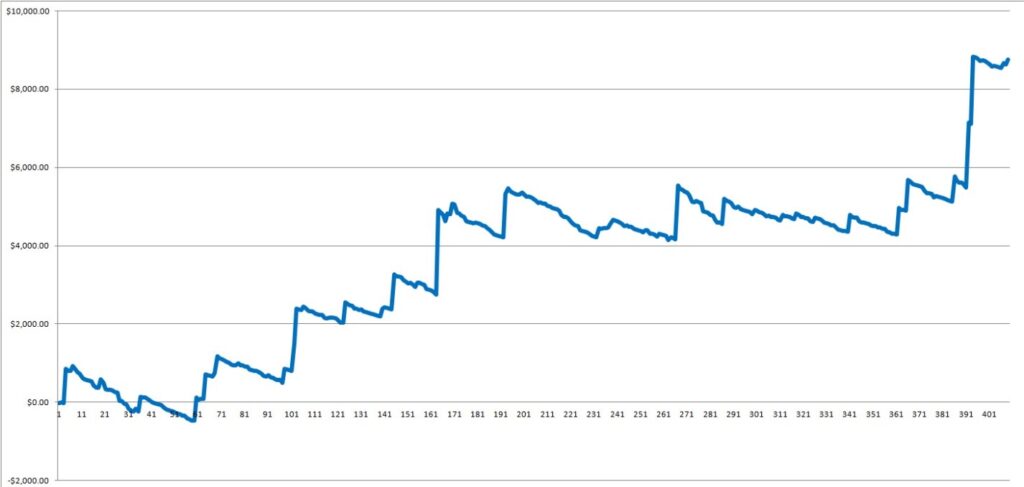
Notice the jarring nature of this graph. The player is usually on a downswing, but then has a sudden large spike when he has a big score. If you play tournaments, you will usually be down from your peak. This drives some poker players crazy because they rarely feel as if their bankroll is ever “up”.
The player in this graph won about $8,700 over the course of 401 tournaments (30 days online) with an average buy-in of $38 (for a 55% return on investment). Depending on how often you play in a day, it could take over two years to play this many tournaments. This player broke even for 200 tournaments, which is more tournaments than most live players play in a year. This graph is actually quite tame. Many players experience significantly more variance, especially if they only play in tournaments with large or tough fields.
How Swings Impact Your Bankroll
My journey in online tournaments has been similar to the above graph, the line generally moving in the upward direction. I have been lucky to win 100 or more buy-ins in major tournaments multiple times throughout my poker career despite not playing all day every day like most grinders. In live poker though, I have experienced significantly more swings.
I lost about 60 buy-ins in my first year playing live tournaments, which amounted to about $250,000 out of my $350,000 bankroll. From there, I was fortunate to win about 300 (huge $10,000) tournament buy-ins over the next year. After that, I continued winning at a small rate and then over the last few years, have roughly broken even. My biggest bankroll downswing has been $450,000 or so, or roughly 80 tournament buy-ins.
These numbers may seem staggering, but they are standard when playing relatively tough high stakes games. If I did not have my one amazing year, I would be a small winner instead of a big one. It is important that you play in a manner that leads to winning tournaments because that is where a large chunk of your win rate comes from.
“Running bad is just another opportunity to gain an edge. Everyone will go through it at times, and people with a good mindset will come out of it stronger.“
– Justin Saliba
Terms to Know
There were a few terms mentioned earlier that may be new to you. First, your “average buy-in” is the amount you buy in for on average. In general, you should keep your buy-in amounts somewhat close. You could play 100 $20 buy-in events for an average buy-in of $20 or you could play 99 $10 events and one $1,000 event for an average buy-in of $20.
Clearly playing one $1,000 event will drastically increase your variance, which should be avoided. I’m fine with a 5:1 spread, assuming the large buy-in events are soft and are not played too often. Many professionals play soft $1,500 buy-in WSOP events on a bankroll adequate for only $500 buy-in events.
The second term is “return on investment” (ROI). This is how much you make on average in each tournament you play. This takes all fees into account. If you play 100 tournaments with an average buy-in of $115 and you cash for $15,000, you invested $11,500 and got back $15,000, meaning you won $3,500. You then divide that amount by your total investment to get your ROI, which is $3,500/$11,500 = 30%. Knowing this number helps nail down how many buy-ins you need to have to maintain a low risk of ruin.
Here are some rough guidelines to help you determine an adequate bankroll, assuming a 30% ROI:
| Players | Buy-ins (Your Bankroll) |
| 9 Players* | 24 Buy-Ins |
| 45 Players | 69 Buy-Ins |
| 90 Players | 103 Buy-Ins |
| 245 Players | 154 Buy-Ins |
| 550 Players | 219 Buy-Ins |
| 1,200 Players | 289 Buy-Ins |
| 2,600 Players | 375 Buy-Ins |
The size of the tournament field (number of poker players in the event) is important when determining your bankroll requirements. It is quite common to have 125 buy-in downswings over 1,000 tournaments played in 1,200 player events.
You must be prepared for these downswings so you are not devastated when they occur. Your ROI will probably not be exactly 30%, so you should be sure to account for that. As you have a higher win rate, you need fewer tournament buy-ins, and as you have a lower win rate, you need more tournament buy-ins in your bankroll.
It is worth mentioning that over the course of 1,000 tournaments played with 1,200-player fields, if you have a 30% ROI, you will only win about 85% of the time. This means if you play 1,000 tournaments with a 30% ROI, you will be down 15% of the time. If you instead have only a 5% ROI, you are up only 54% of the time over 1,000-games. However, a 5% ROI over 1,000 45-player tournaments will result in being up 72% of the time.
If you have a 30% ROI and play 1,000 45-player tournaments, you will be up 100% of the time. If you have a negative ROI, you will lose in the long run. If you want to win at poker, it is mandatory that you play in games where you have an advantage. Especially when you are in the bankroll-building phase of your poker career, focus on small-field tournaments where you have an obviously positive win rate. If you only play 2,500-person tournaments, expect incredibly large swings, almost exclusively in the downward direction.
How Rake Impacts Win Rate
The rake is a huge detractor to your win rate. Many typical, winning small stakes live players play 100 $65 buy-in tournaments ($50 goes to the prize pool and $15 goes to the rake) over the course of the year and cash for $7,000. They are thrilled with this result and think they have a solid win rate. In reality, they are only up $500 over 100 games for a paltry 8% ROI. With no rake (making the buy-in $50), they would instead have a substantial 40% ROI.
Especially when starting out, strive to find tournaments that have 13% rake or less. If your local casino does not offer small stakes events with less than 13% rake, you are probably best off not giving them your business. Remember that just because a game exists does not mean that you have to play.
Taking “Shots” In Bigger Tournaments and Cash Games
You should move up when you are adequately bankrolled with the idea of taking shots at tournaments that are soft. Most poker tournaments become abnormally soft when there is an overlay (when the casino adds money to the prize pool) or when there are lots of satellite qualifiers in the field.
When in the process of moving up, be a bit more cautious with big shots, as they can quickly add a huge amount of variance to your results. Many amateurs make the mistake of grinding $150 buy-in local tournaments all year with the intention of taking their bankroll ($5,000 or so) to Vegas during the summer to try to get rich at the WSOP. While a few of these poker players get lucky, the vast majority go home with nothing.
If your goal is to grind up a bankroll so that you are adequately bankrolled to play $1,500 tournaments, taking huge stabs at them is not the wise way to go about it. You must be content to grind up your bankroll in a slow, disciplined manner. While tournaments provide an avenue to get rich quick, almost no one gets rich and stays rich from big shots.
You should probably be quicker to move down when playing tournaments compared to cash games due to the increased variance. When you dip about 20% below the required bankroll, it is wise to start lowering your average tournament buy-in by mixing in smaller games where you have a larger win rate. This will help ensure you stay in action and are playing in games where you have an advantage.
Playing Satellite Tournaments
Satellites are tournaments where some portion of the field (usually 10%) wins their way into a larger tournament (that usually has 10 times the buy-in of the satellite), and everyone else gets nothing. Since there are no payout jumps once you get in the money and the only payout jump is gigantic ($0 to 10 buy-ins), you should drastically alter your strategy to ensure you get in the money once it becomes clear that is a realistic possibility.
As an oversimplification, you should play normally in the early levels, and once you double or triple your stack, you should adjust your strategy to be a bit more cautious. For a discussion on adjustments to make in satellite tournaments, check out Bernard Lee’s chapter in Excelling at No-Limit Hold’em.
While many amateurs think they should strive to satellite into major tournaments, I think that is a bad idea, assuming your goal is to constantly improve your poker skills and eventually grow your bankroll such that you do not have to rely on satellites to play large events. That said, if your goal is to have a chance to win life-changing money, satellites are a reasonable option.
You will often hear the best professionals discuss how they want to be sure they get to play with the satellite tournament qualifiers in the main event. This is because they correctly understand that most satellite poker players use a strategy that is great at getting in the money but horrible at winning the tournament. This leads to many of the satellite qualifiers playing in an overly tight manner near the money bubble, allowing the professionals to push them around.
It is important to understand satellite tournaments and normal tournaments require different strategies and should be viewed as different games. If you approach both games with the same strategy, you will lose in at least one of the two variants.
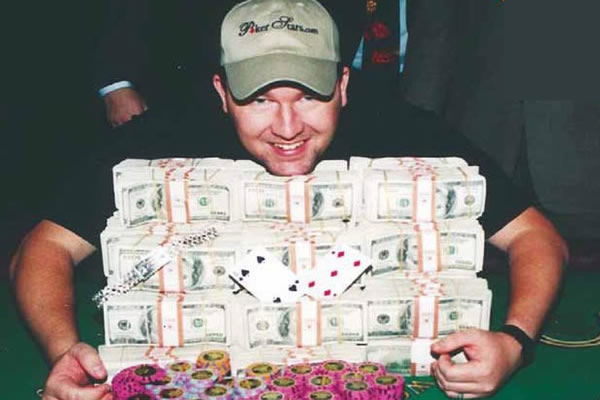
Chris Moneymaker changed poker forever when he won the 2003 WSOP Main Event.
Moneymaker earned his $10,000 seat winning a $86 online satellite tournament.
Satellite Tournaments and ROI
Another problem with satellite tournaments is that your ROI is capped.
In a normal tournament, if you win, it will usually be for 30 times your buy-in or more, but in satellites, the most you can win is 10 (or perhaps more, depending on the structure). This will lead to a lower average ROI because a large amount of a strong poker player’s edge comes from getting to the final table with a large stack and then crushing it.
While you will experience significantly less variance in satellite tournaments, the lower ROI overrides all of this. In fact, it is generally thought that there is no edge to be had in high stakes online satellites because the default strategy of getting some chips early and then being patient until you get in the money is not too difficult to master. If the skills required to win are obvious and implementable, you should not expect to have much of an edge.
The one time that playing satellite tournaments makes financial sense is when the event you are trying to win your way into is normally within your bankroll requirements, and you plan to play the event anyway. For example, a few satellites often take place on the day before a WPT main event. These satellite tournaments may have buy-ins between $350 and $700, with the winners getting $3,500.
If you are properly bankrolled for an average buy-in of $1,500, it could make sense to play both the satellites and the main event. Just be sure you understand that the games are completely different and require drastically different strategies.
Being Bankrolled for Re-entry Tournaments
Re-entry tournaments have become the default type of poker tournament in most venues. They are like normal tournaments except they allow you to re-enter if you bust during a predetermined number of levels. You should not approach these games much differently than you would approach normal tournaments. If you bust before the re-entry period ends, ask yourself if you would buy into a completely new tournament with the current blind structure.
Suppose you play a $550 ($500 + $50 rake) tournament and bust after eight levels. If you opt to re-enter, you will have a 10,000 stack at 400/800 blinds, with 12.5 big blinds. What kind of an edge you will have in a tournament where you start with 12.5 big blinds? If you are honest with yourself (as you must be if you want to reach your full potential), you will know that your ROI is almost certainly less than 10%, and if it is more than 10%, it is perhaps 15% at best. This means that you will essentially break even by re-entering into this event due to the rake.
You should not play, assuming your goal is to make money. While I understand that you did not go to the casino to skip events, be disciplined and do not re-enter.
Suppose you instead bust four times in the first level by getting all-in before the flop with A-A each time. You have played well and done nothing wrong. You should again ask yourself if you should re-enter the tournament. This time, you will have a 10,000 stack at 50/100 blinds, giving you 100 big blinds.
The two main questions you should ask in this spot are if you are on tilt (which I discuss thoroughly in Mastering Small Stakes No-Limit Hold’em) and if you are still properly bankrolled for the event. If you are angry because you played great and got your money in good, then you should likely stop playing. If you are no longer properly bankrolled, you should also stop. You should not stop if you think “it is not your day”.
Always be rational and logical with your thought process and make your decisions accordingly. If you have an edge worth trying to realize, you should re-enter. If you do not, you should not re-enter.
ROI in Re-Entry Tournaments
Toward the end of the re-entry period, it is common to see the short stacks (and some medium and large stacks) playing incredibly wildly, hoping to either double up or bust so they can re-enter with a fresh stack. If your goal is to win the most money possible, playing in this manner is almost always a mistake. Most of the time, your stack is quite short in terms of blinds when you re-enter, meaning that if you have an edge, it will be minimal.
The “short” stack you are considering gambling with will often be half of a starting stack or more. If you voluntarily get your stack in poorly, you are mucking some of your current equity and re-buying with a neutral (or negative) ROI. That does not make logical sense.
The only time you should gamble near the end of the re-entry period is when you have about 33% of a starting stack or less with one level remaining in the re-entry period, assuming you get 25 big blinds or more when you re-enter. This is because your equity with 33% of a starting stack is quite low and if you re-enter, you can still have a decently positive ROI.
It is tough to get it in too poorly with a tiny stack because of the substantial amount of dead blinds and antes in the pot, meaning that getting in “bad” often isn’t too terrible because you will be getting 1.5:1 pot odds. That said, if you don’t think you have a positive ROI re-entering with 25 big blinds, you should play normally.
Make a point to identify the players who are actively trying to double up or bust. Recognize that these players’ ranges are much wider than they should be and adjust accordingly. While it is prudent to ensure someone is making an error before getting extremely out of line to exploit them, with one level left in the re-entry period, if you have an inkling that someone is trying to double or bust, don’t be afraid to get out of line to collect their donation.
Some poker players will actually play in the opposite manner near the end of the re-entry period, becoming very tight, wanting to ensure they do not have to re-enter. While their logic is horribly flawed (because you are not forced to re-enter), you can get a bit out of line and push these players around.
Rake: The Silent Bankroll Killer
The rake is the unrecognized killer of almost all small stakes poker players and their bankrolls. It’s difficult to beat 10% rake capped at 3 big blinds in cash games and a 20% rake in tournaments. If you can beat the large rake, it is often for only a small amount. This is why I suggest starting off playing in games with a significantly beatable rake, with a proper bankroll together.
To illustrate this point, consider what happens when you play in a standard local $1/$2 game with a 10% rake capped at $4, or a $2/$5 game with the same rake. Assuming you win at the rate of 8 big blinds per hour before rake, you will win $16 per hour at $1/$2 and $40 per hour at $2/$5. However, you will pay about $10 rake per hour to play $1/$2, leaving you with $6 profit, while paying about $14 rake per hour to play $2/$5, leaving you with $26 profit. $6 per hour is only 3 big blinds per hour at $1/$2 whereas $26 is 5.2 big blinds per hour at $2/$5.
By moving up and maintaining the same win rate, you give yourself a hefty raise, both in terms of dollars and big blinds per hour. If the only game available to you is $1/$2 with $4 or more rake per hand, you will have a tough time winning at a significant amount in the long run unless your opponents are terrible.
This concept also applies to tournaments. Many small stakes tournaments with buy-ins of less than $500 have 20% rake (or more) and structures that lead to low skill advantages for the strong poker players whereas larger buy-in tournaments have 13% rake (or less) and structures that lead to large skill advantages. If the only game available to you is a tournament with a turbo structure and 30% rake, you will not win in the long run.
While there is nothing you can do to minimize the rake you pay in tournaments because you pay it before you buy in, you can adjust your strategy in cash games in order to pay as little rake as possible. This is done by winning as few pots as possible. This may sound counter-intuitive, but if you only win two pots per hour and you win on average 10 big blinds per hand you play, you will win 20 big blinds per hour minus the roughly 8 big blinds in rake, leaving you with a profit of 12 big blinds per hour.
Compared to someone who wins 40 big blinds per over the course of 15 pots, all of their profits and then some will be devoured by the rake. The easiest way to beat games with an exorbitant rake is to play tightly and only enter the pot when you have a premium hand. Do not fall into the trap of limping or calling raises with all sorts of junk, hoping to flop well. That is a surefire way to burn through your poker bankroll.
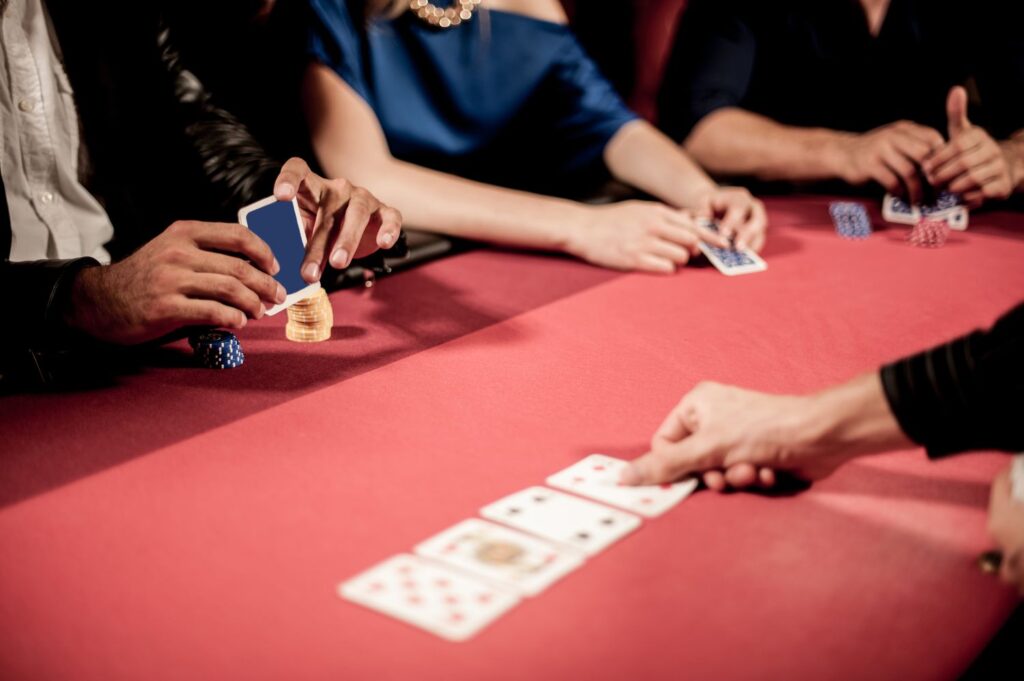
A poker dealer is required for almost every “serious” poker game, but how much should you tip the dealer?
Tipping the Dealer
If the rake the casino takes is not enough to hold you down, you also have to account for the other expenses you take on when you play poker. In live cash games, it is customary to tip the dealer when you win a pot. While I am all for tipping the dealers, you have to be realistic about it. If you win $10 per hour and you tip the dealers $5 per hour ($1 for each of the five pots you win), you cut the amount of money you take home in half.
It is not practical to tip much at all in small stakes games if you care about winning money. As you move up (remember back to the $2/$5 example), you can start tipping $1 per hand. As you move up even higher, even a $3 tip per hand becomes practical. If you feel inclined to tip in small stakes games, I suggest you tip $1 only when you win a sizable pot, which will usually be about once per hour.
In some places, it is customary for the winners of a tournament to tip the staff. Most casinos take 3% of the prize pool out for the dealers. If they do this, do not feel the least bit pressured to tip any additional amount.
The same is true if your casino offers a “dealer add on” (it may have another name) where your $100 tournament buy-in gets you 10,000 chips and if you give the dealers $10 at the start of the event, you get some number (usually 5,000) additional chips. This is a shady, essentially forced, way to induce the players to tip the dealers a significant chunk of the buy-in (9% in this example) on top of the normal rake.
If absolutely no money is taken out on top of a rake that is 10% or less (I haven’t experienced this in years), feel free to tip the dealers a few percent of your winnings.

Don’t just account for the money you spend playing poker.
The travel expenses that often accompany poker also count against your bankroll.
Paying Travel Expenses When Playing Poker
You should also account for the amount of money it costs you to actually travel to play poker. This is referred to as “travel rake”. If the rake the casino takes is not obvious, then the travel rake certainly is not.
If you have to buy $20 worth of gas to drive to and from the casino, that amount should be accounted for because it is an expense you would not otherwise have. If you would normally make dinner at home at the cost of $5, but dinner at the casino costs $15, the $10 difference should be accounted for.
If you travel multiple days to play, the cost of your lodging should be noted. It is common for small stakes poker players to profit a few thousand dollars per year but unknowingly be breakeven or losing due to the travel rake (and in turn hurting their bankroll).
Additionally, make sure you plan ahead in order to maximize your comfort and minimize expenses to your bankroll. This concept can be applied in many ways, such as showing up when you know there will be an open seat in the game you want to play. If you show up to your casino and have to wait two hours to get a seat, you have essentially wasted two hours with which you could have been doing something productive.
I make a point to pack a backpack whenever I go to play poker. My bag contains a bottle of water, a jacket, headphones, sunglasses, a note pad, multiple pens and my iPad. If you ever find yourself wishing you had something at the casino, solve your problem by bringing it with you.
Poker Rake Promotions & Bonuses
Some casinos and poker sites offer various types of bonuses, which you can take advantage of to alleviate the rake. Many online sites offer “rakeback”, where you are given back some portion of the rake you pay each month.
When I used to grind nine-handed tournaments during my first few years as a pro on PartyPoker, I was winning roughly $20,000 per month from the games and getting $15,000 more from 33% rakeback. I was paying roughly $45,000 in rake each month by playing 3,000 $200 + $15 buy-in games. That $15 rake adds up! If you play on a site that offers rakeback and you are not getting it, you are making a mistake.
Some sites have done away with rakeback and instead distribute frequent player points, which can be exchanged for various prizes. On some sites, the items have roughly the same value in terms of points, but on others, they give you a better deal if you exchange them for tournament buy-in tickets (because the casino keeps some of it as rake). Shop around and get a good value.
Bad Beat and High Hand Jackpots
Live casinos also offer various promotions, such as bad beat jackpots. A bad beat jackpot is a promotion where some additional amount of money is raked each hand and is then given to the players who are involved in a pot where a premium hand, such as four of a kind, loses. Each casino sets its own stipulation to make the jackpot hit more or less often.
In general, bad beat jackpots are a horrible deal for no-limit poker players, assuming they are in the same jackpot pool as limit players, which is often the case. This is because you see way fewer turns and rivers in no-limit compared to limit. Some aggressive casinos take an “administration fee” of 10% of whatever the jackpot hits for, so if the players paid in $10,000, only $9,000 is paid out. Some casinos even expect you to tip the floor person who physically pays out the money. If you have the option, do not play at poker tables that take a rake from the bad beat jackpot.
Similar to bad beat jackpots, high hand jackpots pay out some amount of money to the person who makes the highest hand among the entire poker room during a set time period, usually every 30 minutes or hour. Some casinos simply give away a predetermined amount while others tack on an additional $1 rake during the promotion.. If you have to pay in, try to avoid these games. Your table may have the option to opt out of the promotion, which is usually what happens at high stakes.
If you find yourself in a jackpot game, you should not alter your play at all. You should naturally play all pairs (which can make four of a kind). Folding your weak suited connectors is still ideal (because you are rarely going to make a straight flush, and when you do, you will almost never be against quads).
Play your normal strategy and do not get illusions of grandeur. While you should not alter your poker play in jackpot games, many of your opponents will. They may be inclined to call preflop raises with any hand that could be part of the jackpot. You will see poker players using wide preflop ranges which have to be folded by the turn and river.
Some casinos sporadically offer various other promotions. Some will “splash the pot” where they put $100 into random pots each hour. Others pay out some amount of money whenever pocket Aces get cracked. Many casinos will comp food and hotel rooms if you play long enough. Make a point to get money back from the casino, because every penny increases your bankroll’s bottom line.
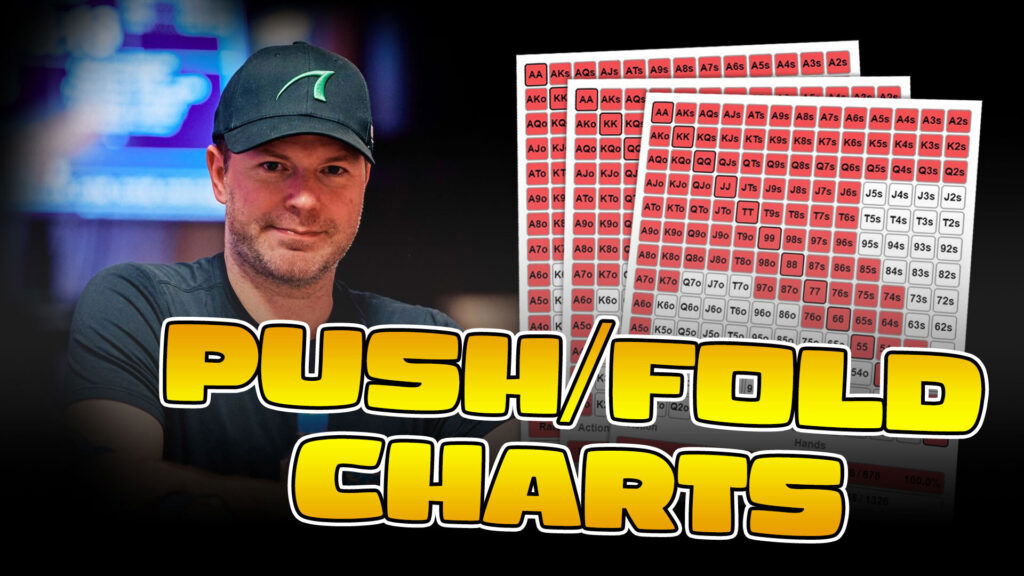
Make the best preflop decisions with Jonathan Little’s Push/Fold Charts!
Prop Play and Loyalty Programs
Some casinos offer their most loyal players the opportunity to be prop poker players. Prop players usually agree to play a set number of hours each week during the off-peak hours in short-handed games.
Essentially, prop players start games and keep games running. They usually don’t pick which game they play and are shuttled from game to game by the floor person. In exchange for this, the prop player is paid an hourly rate, usually between $10 and $20 per hour. If you know you are going to play a ton of poker in the same casino, look into prop play.
Occasionally, casinos offer player loyalty bonuses with entries into monthly invitational tournaments to players who play enough hours each month. This works out to a $250 bonus each month, which is not too significant. Other casinos essentially make all their poker tournaments into league games where the players with the best results at the end of the month or year are invited to an invitational tournament.
If you find that you are not being invited to these events, recognize that you are funding other players. It may be prudent to find a casino that does not offer this type of promotion.
Buy-In Tickets
Some casinos award tournament buy-in tickets to players for various reasons. Some of these players will look to sell it to someone else at a discount. If you can buy a $300 tournament buy-in ticket for $200, you immediately scooped up 50% ROI (minus the rake) because you are putting $200 into the prize pool whereas everyone else is putting in $300.
Be sure you are buying real tickets. If you want to take this to the extreme, if you know there is always a line of players buying into the $300 event on the day of the tournament, but people are selling tickets they do not want a week in advance for $200, it may make sense to buy 10 tickets at $200 and then sell them for $290 to the players in line to buy in on the day of the event. That said, be careful to not get stuck with worthless tickets. Gambling is fun!
As you can see, the concept of rake extends well beyond exactly what you pay the casino to play. You should strive to be acutely aware of where your money is going to and coming from.
Conclusion
That is everything there is to know about bankroll management (I think!). If I missed anything, let me know in the comment section below and I will address it. Thanks for reading! Please share this post with your friends. I would greatly appreciate it!

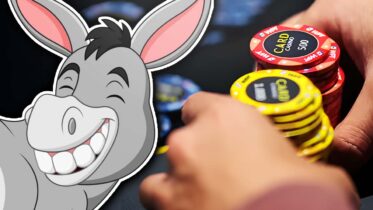

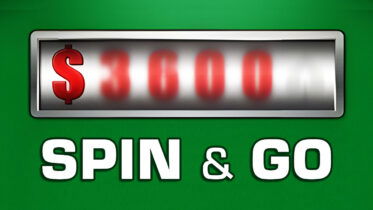
Pingback: Poker Etiquette Rules – Show Your Class at the Tables
Pingback: Is Poker a Game of Skill or Luck?